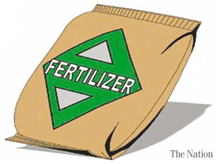Why Apply Fertilizer:

Fertilizer is applied to prevent nutrient deficiencies as there are many types of it. If you can identify nutrient deficiencies it can help to determine which element is limiting growth…
- Uniform yellowing (chlorosis) of older foliage first. Leaf color fades to ivory with red hue
- Entire plant stunted
- Growth slows dramatically
- Common in containerized or recently transplanted plants
- Common in turf grown in sand
Potassium Deficiency
Typical Plant Responses:- Yellowing from margins toward center in older leaves first
- Orange spots
- Necrotic margins
- Leaves frizzled, midrib alive
Magnesium Deficiency
Typical Plant Responses:- Distinct yellow, inverted “V” pattern on older, mature leaves
- Necrotic spots
- Curled leaf margins
Iron Deficiency
Typical Plant Responses:- Interveinal chlorosis- young leaves turn yellow but veins remain green
- Common in alkaline, compacted, or poorly drained soils
Manganese Deficiency
Typical Plant Responses:- Interveinal chlorosis- young leaves yellow with wide green veins
- Contortion or “frizzies”
- Death of palm bud
- Common on alkaline soils
- Common in palms
Zinc Deficiency
Typical Plant Responses:- Young leaves abnormally small and narrow
- Internodes short
- Wavy or puckered margins
- Common on alkaline soils
When Do I Apply fertilizer to a Lawn?
- During the active growing season
- In spring, after danger of frost
- In early fall, before winter dormancy
- Apply iron to green up lawn in summer
- During establishment
- During recovery
- From drought, wear, insects, or disease
Selecting a Fertilizer
Buy fertilizer that contains only the nutrients you need- Test soil to determine what nutrients are needed.
- If applying N, you need to consider what source to use
- Water Soluble- rapidly released to plants
- Water Insoluble- slowly released (preferred)
